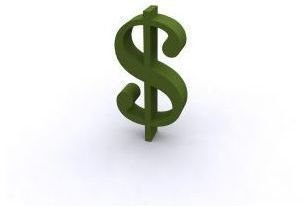Expense or Depreciate? Tips for Claiming Small Business Tax Deductions
What’s in a Fixed Asset?
**
Fixed Assets Versus Other Expenses
As a business owner, you will make many purchases for use in your operations. There are two basic types of purchases; one is when items are used within a year’s time that will be expensed within that year. The other is for an asset that will last for more than one year called a fixed asset. Fixed assets are generally expensed over the years you expect to use them. If a fixed asset (like a piece of equipment) cost $5,000 and is expected to last five years, theoretically, $1,000 will be expensed in each of the five years. Should you expense or depreciate? These helpful tips for claiming small business tax deductions will help you solve this dilemma.
Depreciation Versus Amortization Versus Depletion
Fixed assets are depreciated while intangible assets are amortized. Intangible assets, such as goodwill, are still written off over their useful lives using amortization. When land is purchased with a building, the costs must be allocated to land and building. Land is not a depreciable asset. The exception is when land contains oil; the cost uses a process called depletion to expense the cost over the life of the process of extracting the oil.
Depreciation has many methods that may be utilized for your fixed assets. The double declining balance method features larger amounts being expensed in the early years. Straight line is the method described for the $5,000 asset and results in equal distribution of the cost over the five years. The Modified Accelerated Cost Recovery System (MACRS) is a tax method designed by the Internal Revenue Code resulting in more expense in the first years the asset is in service. The Units of Production method was designed for equipment based on how many units it is expected to produce over time and depreciation varies according to actual unit production.
Tax Benefits
Subsection 179 of the Internal Revenue Service (IRS) tax codes allows for special fixed asset deductions at an accelerated rate. The amount of the benefit is changed yearly. The fixed assets purchased may be partially or 100 percent deductible as an expense in the year of purchase if the assets meet certain criteria. Additionally, the total purchases for fixed assets cannot exceed a dollar threshold adjusted annually. You may be allowed to “expense” the entire cost of your fixed asset this year.
Vehicles
One option for business vehicles is to expense the cost of the asset over time using depreciation. In this case, the upkeep costs of the vehicle such as oil changes and gas are deductible as current expenses. However, another method may be more suitable to small business owners.
Standard mileage rates may be multiplied by the actual business mileage driven and deducted as an expense. This method is preferable in circumstances where the business use of the vehicle is less than 50 percent. Any personal use of a vehicle that is also used for business must generally be documented in some manner. The standard mileage rate changes periodically, sometimes more than once a year. The mileage rate method is especially ideal if you use the same vehicle for multiple companies. The mileage deduction is easy to calculate and easy to use in any company desired.
Home Office Deduction
Many small business owners use a portion of their home for an office. Usually based on square footage of the home used, you may be able to deduct a percentage portion of all your home expenses. Mortgage interest, electricity, home insurance, and cable bills are a few of the expenses you may prorate based on the percentage of square footage calculated. The home office deduction has certain criteria that must be met and rules to be reviewed.
Travel and Meals
Travel expenses are another area with large opportunities. If a vehicle is driven, the standard mileage rates listed above may be used. The trip has to be for a valid business purpose. If you take your entire family, any extra expense you would not have incurred without them is not a valid business expense.
Meals are generally only 50 percent deductible. As with most IRS regulations, there are exceptions. One exception is that your profession has a special set of rules such as the trucking industry. Another exception is a business dinner when you take a client out to discuss the possibility of selling his new product. The business dinner is 100 percent deductible to be contrasted with a meal taken on a company trip that is only 50 percent deductible. Let’s say you take a lunch by yourself. By company policy, since you did not entertain a client, it is not reimbursable by the company and is probably not deductible at all as a business expense.
If you own a law firm and are preparing for a big case, you may have lunch catered in for your staff to finish the job in a timely manner. The meal is 100 percent deductible because it meets two special criteria the IRS specifies. It was catered in to the actual place of employment and it was for the express convenience of the employer.
Summary
Being a small business owner is a large responsibility. Watching your costs and timing your large purchases to follow your cash flow and tax deduction opportunities may help make your business flourish. Knowing the tax rules will help ensure you are able to distinguish which expenses are deductible and when. Tax planning is crucial to the success of your business.
References
-
IRS Publication 463 Travel, Entertainment, Gift, and Car Expenses
-
IRS Publication 535 Business Expenses
-
http://www.sxc.hu/photo/[983479](http://www.sxc.hu/photo/983479)
-
IRS Announcement for 2011 Mileage Rates -
-
IRS Publication 587 Business Use of Your Home
-
IRS Form 8829 - Expenses for Business Use of Your Home - Instructions:
